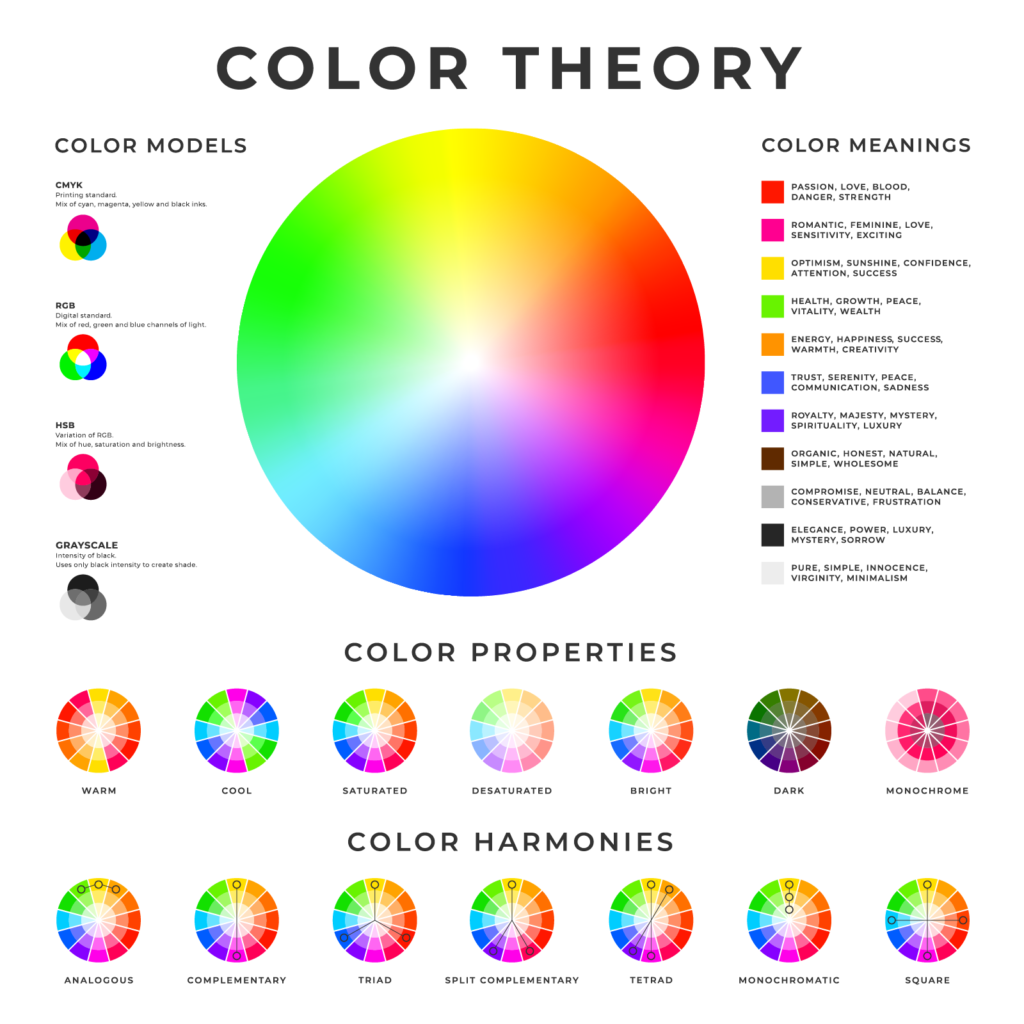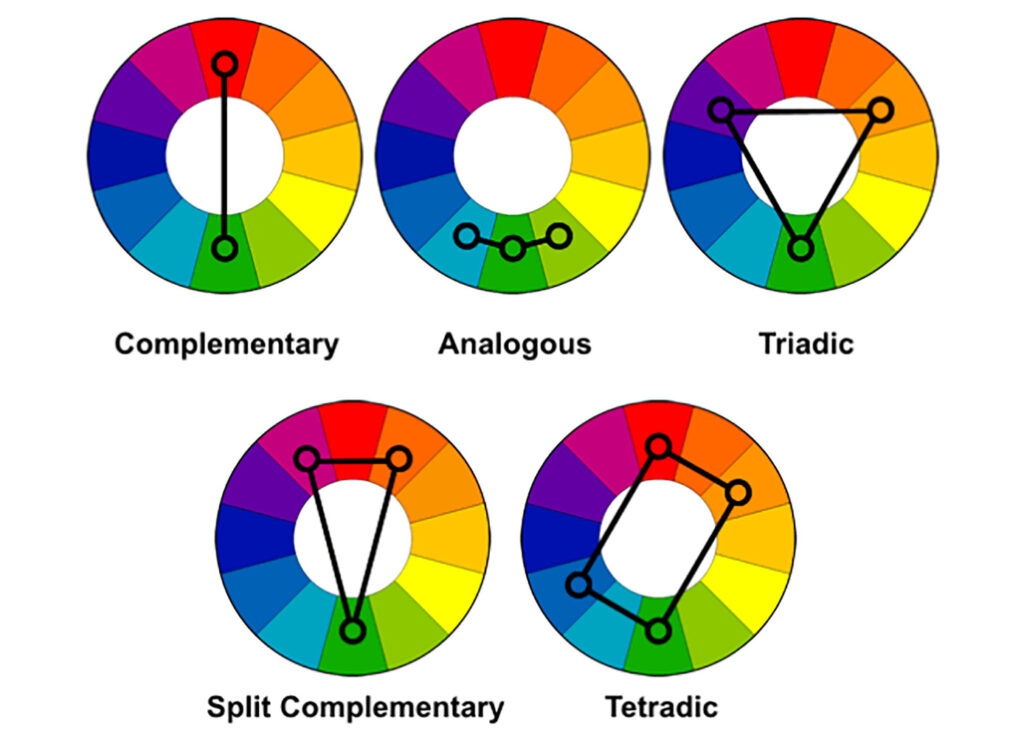Color theory is a fundamental concept in art and design that explains how colors interact, mix, and produce visual effects when combined. Understanding color theory can enhance your ability to create visually appealing and harmonious designs.
The Color Wheel
At the heart of color theory lies the color wheel, a circular diagram that illustrates the relationships between colors. It consists of:shop.decoart.com

- Primary Colors: Red, blue, and yellow. These colors cannot be created by mixing other colors.
- Secondary Colors: Green, orange, and purple. These are formed by mixing two primary colors.trembelingart.com+2Reddit+2Architectural Digest+2
- Tertiary Colors: Colors like red-orange, yellow-green, etc., created by mixing a primary color with a neighboring secondary color.
Understanding the color wheel helps in creating various color schemes:shop.decoart.com
- Complementary Colors: Colors located directly opposite each other on the wheel, such as red and green. Using complementary colors can create vibrant contrasts.
- Analogous Colors: Colors that are next to each other on the wheel, like blue, blue-green, and green. These combinations are harmonious and pleasing to the eye.
- Triadic Colors: Three colors evenly spaced around the wheel, such as red, yellow, and blue. This scheme offers a balanced and vibrant look.trembelingart.com
Color Properties

Each color has three main properties:Pavilion DINFOS
- Hue: The name of the color (e.g., red, blue).
- Saturation: The intensity or purity of the color. High saturation means the color is vivid; low saturation appears more grayish.
- Value: The lightness or darkness of a color. Adding white creates a tint, black a shade, and gray a tone.
Applying Color Theory
Incorporating color theory into your designs can evoke specific emotions and create desired atmospheres. For instance, warm colors like red and yellow can evoke energy and warmth, while cool colors like blue and green can be calming.
Visual Examples
To visualize these concepts, here are some images illustrating the color wheel and various color schemes:
Prompt for Image Generation
If you’re using an AI image generation tool like DALL·E or Midjourney, you can use the following prompt to create an image representing color theory:
“A detailed color wheel illustrating primary, secondary, and tertiary colors, with labeled sections for complementary, analogous, and triadic color schemes.”
Additional Resources
For a more in-depth understanding of color theory, consider exploring these resources:
- Basic Color Theory – Color Matters
- Color Theory for Absolute Beginners – Trembeling Art
- Color Wheel and Color Theory – Canva
These resources provide comprehensive insights into color relationships, harmonies, and practical applications in design.
By grasping the fundamentals of color theory, you can enhance your artistic and design endeavors, creating more engaging and aesthetically pleasing works.
For more tips and resources, stay connected with us at PARIPIXEL.COM.




Crash-style games are online games with a dynamic experience.
They include a rising multiplier that players can track in real time.
The goal is to act before the multiplier ends.
csgo skin crash
Such games are well-known for their easy rules and thrill.
They are often used to train reaction speed.
A lot of platforms host crash games with different designs and features.
You can explore these games now for a fun experience.